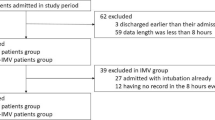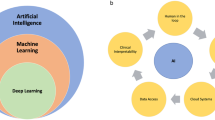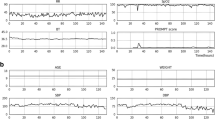Abstract
The Neonatal intensive care unit (NICU) is a specialized section for newborn babies. The neonates are in vulnerable conditions in the ICU, so the predictive models will help to indicate the seriousness of the patients and assist the doctors in taking immediate actions. The Medical Information Mart for Intensive Care III (MIMIC-III) dataset is used in this research. The medicines medicated in critical newborn children were detected, and how the drugs and the doses of drugs can affect the Length of Stay (LOS) in NICU is analyzed. The predictive result of ICU Length of Stay (LOS) for the patients admitted to NICU for seven days is analyzed. Different Machine Learning algorithms were implemented for developing the classification model, and Logistic Regression Algorithm performed well and showed an F1 score of about 85%, which was better than the F1 score of the deep learning model long Short-Term Memory (LSTM). The automated Machine Learning (AutoML) tool, AutoNLP was also implemented for classifying LOS. But traditional methods demonstrated better performance in comparison to AutoML.
Access this chapter
Tax calculation will be finalised at checkout
Purchases are for personal use only
Similar content being viewed by others
References
Adiba, F.I., Islam, T., Kaiser, M.S., Mahmud, M., Rahman, M.A.: Effect of corpora on classification of fake news using Naive Bayes classifier. Int. J. Autom. AI Mach. Learn. (IJAAIML) 1(1) (2020). https://researchlakejournals.com/index.php/AAIML/article/view/45/32
Adiba, F.I., Sharwardy, S.N., Rahman, M.Z.: Multivariate time series prediction of pediatric ICU data using deep learning. In: 2021 International Conference on Innovative Trends in Information Technology (ICITIIT), pp. 1–6 (2021). https://doi.org/10.1109/ICITIIT51526.2021.9399593
Ahmed, S., Hossain, M.F., Nur, S.B., Shamim Kaiser, M., Mahmud, M.: Toward machine learning-based psychological assessment of autism spectrum disorders in school and community. In: Kaiser, M.S., Bandyopadhyay, A., Ray, K., Singh, R., Nagar, V. (eds.) Proceedings of Trends in Electronics and Health Informatics. LNNS, vol. 376, pp. 139–149. Springer, Singapore (2022). https://doi.org/10.1007/978-981-16-8826-3_13
Niamat Ullah Akhund, T.M., Mahi, M.J.N., Hasnat Tanvir, A.N.M., Mahmud, M., Kaiser, M.S.: ADEPTNESS: Alzheimer’s disease patient management system using pervasive sensors - early prototype and preliminary results. In: Wang, S., et al. (eds.) BI 2018. LNCS (LNAI), vol. 11309, pp. 413–422. Springer, Cham (2018). https://doi.org/10.1007/978-3-030-05587-5_39
Akter, T., Ali, M.H., Satu, M.S., Khan, M.I., Mahmud, M.: Towards autism subtype detection through identification of discriminatory factors using machine learning. In: Mahmud, M., Kaiser, M.S., Vassanelli, S., Dai, Q., Zhong, N. (eds.) BI 2021. LNCS (LNAI), vol. 12960, pp. 401–410. Springer, Cham (2021). https://doi.org/10.1007/978-3-030-86993-9_36
Al Banna, M.H., Ghosh, T., Taher, K.A., Kaiser, M.S., Mahmud, M.: A monitoring system for patients of autism spectrum disorder using artificial intelligence. In: Mahmud, M., Vassanelli, S., Kaiser, M.S., Zhong, N. (eds.) BI 2020. LNCS (LNAI), vol. 12241, pp. 251–262. Springer, Cham (2020). https://doi.org/10.1007/978-3-030-59277-6_23
Al Mamun, S., Kaiser, M.S., Mahmud, M.: An artificial intelligence based approach towards inclusive healthcare provisioning in society 5.0: a perspective on brain disorder. In: Mahmud, M., Kaiser, M.S., Vassanelli, S., Dai, Q., Zhong, N. (eds.) BI 2021. LNCS (LNAI), vol. 12960, pp. 157–169. Springer, Cham (2021). https://doi.org/10.1007/978-3-030-86993-9_15
Johnson, A., Pollard, T., Mark, R.: MIMIC-III clinical database demo (version 1.4) (2019). https://doi.org/10.13026/C2HM2Q
Alsinglawi, B., et al.: Predicting length of stay for cardiovascular hospitalizations in the intensive care unit: machine learning approach. In: 2020 42nd Annual International Conference of the IEEE Engineering in Medicine Biology Society (EMBC), pp. 5442–5445 (2020). https://doi.org/10.1109/EMBC44109.2020.9175889
AutoML.org: What is AutoML? https://www.automl.org/automl/. Accessed 31 Mar 2022
Bhapkar, H.R., Mahalle, P.N., Shinde, G.R., Mahmud, M.: Rough sets in COVID-19 to predict symptomatic cases. In: Santosh, K.C., Joshi, A. (eds.) COVID-19: Prediction, Decision-Making, and its Impacts. LNDECT, vol. 60, pp. 57–68. Springer, Singapore (2021). https://doi.org/10.1007/978-981-15-9682-7_7
Bird, S., Klein, E., Loper, E.: Natural Language Processing with Python: Analyzing Text with the Natural Language Toolkit. O’Reilly Media (2009). https://books.google.com.bd/books?id=KGIbfiiP1i4C
Bishop, C.M.: Pattern Recognition and Machine Learning (Information Science and Statistics). Springer, Heidelberg (2006)
Biswas, M., Kaiser, M.S., Mahmud, M., Al Mamun, S., Hossain, M.S., Rahman, M.A.: An XAI based autism detection: the context behind the detection. In: Mahmud, M., Kaiser, M.S., Vassanelli, S., Dai, Q., Zhong, N. (eds.) BI 2021. LNCS (LNAI), vol. 12960, pp. 448–459. Springer, Cham (2021). https://doi.org/10.1007/978-3-030-86993-9_40
Biswas, M., et al.: Indoor navigation support system for patients with neurodegenerative diseases. In: Mahmud, M., Kaiser, M.S., Vassanelli, S., Dai, Q., Zhong, N. (eds.) BI 2021. LNCS (LNAI), vol. 12960, pp. 411–422. Springer, Cham (2021). https://doi.org/10.1007/978-3-030-86993-9_37
Biswas, M., et al.: ACCU\(^3\)RATE: a mobile health application rating scale based on user reviews. PLoS ONE 16(12), e0258050 (2021)
Chen, T., et al.: A dominant set-informed interpretable fuzzy system for automated diagnosis of dementia. Front. Neurosci. 16, Article ID 867664 (2022)
Das, T.R., Hasan, S., Sarwar, S.M., Das, J.K., Rahman, M.A.: Facial spoof detection using support vector machine. In: Kaiser, M.S., Bandyopadhyay, A., Mahmud, M., Ray, K. (eds.) Proceedings of International Conference on Trends in Computational and Cognitive Engineering. AISC, vol. 1309, pp. 615–625. Springer, Singapore (2021). https://doi.org/10.1007/978-981-33-4673-4_50
Deepa, B., Murugappan, M., Sumithra, M., Mahmud, M., Al-Rakhami, M.S.: Pattern descriptors orientation and map firefly algorithm based brain pathology classification using hybridized machine learning algorithm. IEEE Access 10, 3848–3863 (2021)
Drugs.com. https://www.drugs.com/search.php?searchterm=heparin &a=1. Accessed 25 Mar 2022
Elaziz, M., Al-qaness, M., Ewees, A., Dahou, A.: Recent Advances in NLP: The Case of Arabic Language. Studies in Computational Intelligence. Springer, Cham (2019). https://books.google.com.bd/books?id=HQ3BDwAAQBAJ
Farhin, F., Kaiser, M.S., Mahmud, M.: Secured smart healthcare system: blockchain and Bayesian inference based approach. In: Kaiser, M.S., Bandyopadhyay, A., Mahmud, M., Ray, K. (eds.) Proceedings of International Conference on Trends in Computational and Cognitive Engineering. AISC, vol. 1309, pp. 455–465. Springer, Singapore (2021). https://doi.org/10.1007/978-981-33-4673-4_36
Ferdous, H., Siraj, T., Setu, S.J., Anwar, M.M., Rahman, M.A.: Machine learning approach towards satellite image classification. In: Kaiser, M.S., Bandyopadhyay, A., Mahmud, M., Ray, K. (eds.) Proceedings of International Conference on Trends in Computational and Cognitive Engineering. AISC, vol. 1309, pp. 627–637. Springer, Singapore (2021). https://doi.org/10.1007/978-981-33-4673-4_51
Gentimis, T., Alnaser, A.J., Durante, A., Cook, K., Steele, R.: Predicting hospital length of stay using neural networks on MIMIC III data. In: 2017 IEEE 15th International Conference on Dependable, Autonomic and Secure Computing, 15th International Conference on Pervasive Intelligence and Computing, 3rd International Conference on Big Data Intelligence and Computing and Cyber Science and Technology Congress (DASC/PiCom/DataCom/CyberSciTech), pp. 1194–1201 (2017). https://doi.org/10.1109/DASC-PICom-DataCom-CyberSciTec.2017.191
Ghosh, T., et al.: Artificial intelligence and internet of things in screening and management of autism spectrum disorder. Sustain. Cities Soc. 74, 103189 (2021)
Health Science Center: The Neonatal Intensive Care Unit (NICU). https://www.stanfordchildrens.org/en/topic/default?id=the-neonatal-intensive-care-unit-nicu-90-P02389. Accessed 24 Mar 2022
Jesmin, S., Kaiser, M.S., Mahmud, M.: Artificial and internet of healthcare things based Alzheimer care during COVID 19. In: Mahmud, M., Vassanelli, S., Kaiser, M.S., Zhong, N. (eds.) BI 2020. LNCS (LNAI), vol. 12241, pp. 263–274. Springer, Cham (2020). https://doi.org/10.1007/978-3-030-59277-6_24
Jesmin, S., Kaiser, M.S., Mahmud, M.: Towards artificial intelligence driven stress monitoring for mental wellbeing tracking during Covid-19. In: Proceedings of the WI-IAT, pp. 845–851 (2020)
Johnson, A.E., et al.: MIMIC-III, a freely accessible critical care database. Sci. Data 3, 160035 (2016). https://doi.org/10.1038/sdata.2016.35
Kaiser, M.S., et al.: 6G access network for intelligent internet of healthcare things: opportunity, challenges, and research directions. In: Kaiser, M.S., Bandyopadhyay, A., Mahmud, M., Ray, K. (eds.) Proceedings of International Conference on Trends in Computational and Cognitive Engineering. AISC, vol. 1309, pp. 317–328. Springer, Singapore (2021). https://doi.org/10.1007/978-981-33-4673-4_25
Kumar, I., et al.: Dense tissue pattern characterization using deep neural network. Cogn. Comput. 14, 1–24 (2022). https://doi.org/10.1007/s12559-021-09970-2
Kumar, S., et al.: Forecasting major impacts of Covid-19 pandemic on country-driven sectors: challenges, lessons, and future roadmap. Pers. Ubiquitous Comput. 1–24 (2021)
Lalotra, G.S., Kumar, V., Bhatt, A., Chen, T., Mahmud, M.: iReTADS: an intelligent real-time anomaly detection system for cloud communications using temporal data summarization and neural network. Secur. Commun. Netw. 2022, 1–15, Article ID 9149164 (2022)
Scikit learn: sklearn.feature_extraction.text.tfidfvectorizer. https://scikit-learn.org/stable/modules/generated/sklearn.feature_extraction.text.TfidfVectorizer.html. Accessed 5 Jan 2022
Ma, X., Si, Y., Wang, Z., Wang, Y.: Length of stay prediction for ICU patients using individualized single classification algorithm. Comput. Methods Programs Biomed. 186, 105224 (2020). https://doi.org/10.1016/j.cmpb.2019.105224. https://www.sciencedirect.com/science/article/pii/S0169260719316529
Mahima, K.T.Y., Ginige, T.N.D.S., De Zoysa, K.: Evaluation of sentiment analysis based on AutoML and traditional approaches. Int. J. Adv. Comput. Sci. Appl. 12(2) (2021). https://doi.org/10.14569/IJACSA.2021.0120277
Mahmud, M., Kaiser, M.S.: Machine learning in fighting pandemics: a COVID-19 case study. In: Santosh, K.C., Joshi, A. (eds.) COVID-19: Prediction, Decision-Making, and its Impacts. LNDECT, vol. 60, pp. 77–81. Springer, Singapore (2021). https://doi.org/10.1007/978-981-15-9682-7_9
Mahmud, M., Kaiser, M.S., Hussain, A., Vassanelli, S.: Applications of deep learning and reinforcement learning to biological data. IEEE Trans. Neural Netw. Learn. Syst. 29(6), 2063–2079 (2018)
Mahmud, M., et al.: Towards explainable and privacy-preserving artificial intelligence for personalisation in autism spectrum disorder. In: Antona, M., Stephanidis, C. (eds.) HCII 2022. LNCS, pp. 356–370. Springer, Cham (2022). https://doi.org/10.1007/978-3-031-05039-8_26
Mammoottil, M.J., Kulangara, L.J., Cherian, A.S., Mohandas, P., Hasikin, K., Mahmud, M.: Detection of breast cancer from five-view thermal images using convolutional neural networks. J. Healthcare Eng. 2022, Article ID 4295221 (2022)
Mansouri, A., Noei, M., Abadeh, M.S.: Predicting hospital length of stay of neonates admitted to the NICU using data mining techniques. In: 2020 10th International Conference on Computer and Knowledge Engineering (ICCKE), pp. 629–635 (2020). https://doi.org/10.1109/ICCKE50421.2020.9303666
MIT-LCP: MIMIC-III documentation. https://mimic.mit.edu/docs/iii/. Accessed 2 Jan 2022
Mukherjee, H., et al.: Automatic lung health screening using respiratory sounds. J. Med. Syst. 45(2), 1–9 (2021)
Mukherjee, P., Bhattacharyya, I., Mullick, M., Kumar, R., Roy, N.D., Mahmud, M.: iConDet: an intelligent portable healthcare app for the detection of conjunctivitis. In: Mahmud, M., Kaiser, M.S., Kasabov, N., Iftekharuddin, K., Zhong, N. (eds.) AII 2021. CCIS, vol. 1435, pp. 29–42. Springer, Cham (2021). https://doi.org/10.1007/978-3-030-82269-9_3
Nahiduzzaman, M., Tasnim, M., Newaz, N.T., Kaiser, M.S., Mahmud, M.: Machine learning based early fall detection for elderly people with neurological disorder using multimodal data fusion. In: Mahmud, M., Vassanelli, S., Kaiser, M.S., Zhong, N. (eds.) BI 2020. LNCS (LNAI), vol. 12241, pp. 204–214. Springer, Cham (2020). https://doi.org/10.1007/978-3-030-59277-6_19
UAPR Office: Counting what matters - MPDSR report maternal and perinatal death surveillance and response systems in Asia-pacific during the Covid-19 pandemic. https://asiapacific.unfpa.org/en/counting-what-matters-MPDSR-report. Accessed 2 Feb 2022
Paul, A., Basu, A., Mahmud, M., Kaiser, M.S., Sarkar, R.: Inverted bell-curve-based ensemble of deep learning models for detection of Covid-19 from chest X-rays. Neural Comput. Appl. 1–15 (2022)
Prakash, N., Murugappan, M., Hemalakshmi, G., Jayalakshmi, M., Mahmud, M.: Deep transfer learning for Covid-19 detection and infection localization with superpixel based segmentation. Sustain. Cities Soc. 75, 103252 (2021)
Rahman, M.A., Brown, D.J., Shopland, N., Burton, A., Mahmud, M.: Explainable multimodal machine learning for engagement analysis by continuous performance test. In: Antona, M., Stephanidis, C. (eds.) HCII 2022. LNCS, vol. 13309, pp. 386–399. Springer, Cham (2022). https://doi.org/10.1007/978-3-031-05039-8_28
Rakib, A.B., Rumky, E.A., Ashraf, A.J., Hillas, M.M., Rahman, M.A.: Mental healthcare chatbot using sequence-to-sequence learning and BiLSTM. In: Mahmud, M., Kaiser, M.S., Vassanelli, S., Dai, Q., Zhong, N. (eds.) BI 2021. LNCS (LNAI), vol. 12960, pp. 378–387. Springer, Cham (2021). https://doi.org/10.1007/978-3-030-86993-9_34
Satu, M.S., et al.: Short-term prediction of Covid-19 cases using machine learning models. Appl. Sci. 11(9), 4266 (2021)
Shaffi, N., et al.: Triplet-loss based Siamese convolutional neural network for 4-way classification of Alzheimer’s disease. In: Mahmud, M., He, J., Vassanelli, S., van Zundert, A., Zhong, N. (eds.) BI 2022. LNCS, vol. 13406, pp. 277–287. Springer, Cham (2022). https://doi.org/10.1007/978-3-031-15037-1_23
Sumi, A.I., Zohora, M.F., Mahjabeen, M., Faria, T.J., Mahmud, M., Kaiser, M.S.: fASSERT: a fuzzy assistive system for children with autism using internet of things. In: Wang, S., et al. (eds.) BI 2018. LNCS (LNAI), vol. 11309, pp. 403–412. Springer, Cham (2018). https://doi.org/10.1007/978-3-030-05587-5_38
Toptas, M., Samanci, N.S., et al.: Factors affecting the length of stay in the intensive care unit: our clinical experience. Biomed. Res. Int. 2018, 1–4 (2018)
UNICEF: Pregnant mothers and babies born during Covid-19 pandemic threatened by strained health systems and disruptions in services. https://www.unicef.org/bangladesh/en/press-releases/pregnant-mothers-and-babies-born-during-covid-19-pandemic-threatened-strained-health. Accessed 2 Feb 2022
Wadhera, T., Mahmud, M.: Brain networks in autism spectrum disorder, epilepsy and their relationship: a machine learning approach. In: Chen, T., Carter, J., Mahmud, M., Khuman, A.S. (eds.) Artificial Intelligence in Healthcare. BIH, pp. 125–142. Springer, Cham (2022). https://doi.org/10.1007/978-981-19-5272-2_6
Wadhera, T., Mahmud, M.: Influences of social learning in individual perception and decision making in people with autism: a computational approach. In: Mahmud, M., He, J., Vassanelli, S., van Zundert, A., Zhong, N. (eds.) BI 2022. LNCS, vol. 13406, pp. 50–61. Springer, Cham (2022). https://doi.org/10.1007/978-3-031-15037-1_5
WHO: Newborns: improving survival and well-being. https://www.who.int/news-room/fact-sheets/detail/newborns-reducing-mortality. Accessed 24 Mar 2022
Yahaya, S.W., Lotfi, A., Mahmud, M.: Towards the development of an adaptive system for detecting anomaly in human activities. In: Proceedings of the SSCI, pp. 534–541 (2020)
Yahaya, S.W., Lotfi, A., Mahmud, M.: Towards a data-driven adaptive anomaly detection system for human activity. Pattern Recogn. Lett. 145, 200–207 (2021)
Zohora, M.F., Tania, M.H., Kaiser, M.S., Mahmud, M.: Forecasting the risk of type II diabetes using reinforcement learning. In: Proceedings of the ICIEV icIVPR, pp. 1–6 (2020)
Author information
Authors and Affiliations
Corresponding author
Editor information
Editors and Affiliations
Rights and permissions
Copyright information
© 2022 The Author(s), under exclusive license to Springer Nature Switzerland AG
About this paper
Cite this paper
Adiba, F.I., Rahman, M.Z. (2022). Machine Learning Models to Analyze the Effect of Drugs on Neonatal-ICU Length of Stay. In: Mahmud, M., Ieracitano, C., Kaiser, M.S., Mammone, N., Morabito, F.C. (eds) Applied Intelligence and Informatics. AII 2022. Communications in Computer and Information Science, vol 1724. Springer, Cham. https://doi.org/10.1007/978-3-031-24801-6_14
Download citation
DOI: https://doi.org/10.1007/978-3-031-24801-6_14
Publisher Name: Springer, Cham
Online ISBN: 978-3-031-24801-6
eBook Packages: Computer ScienceComputer Science (R0)




